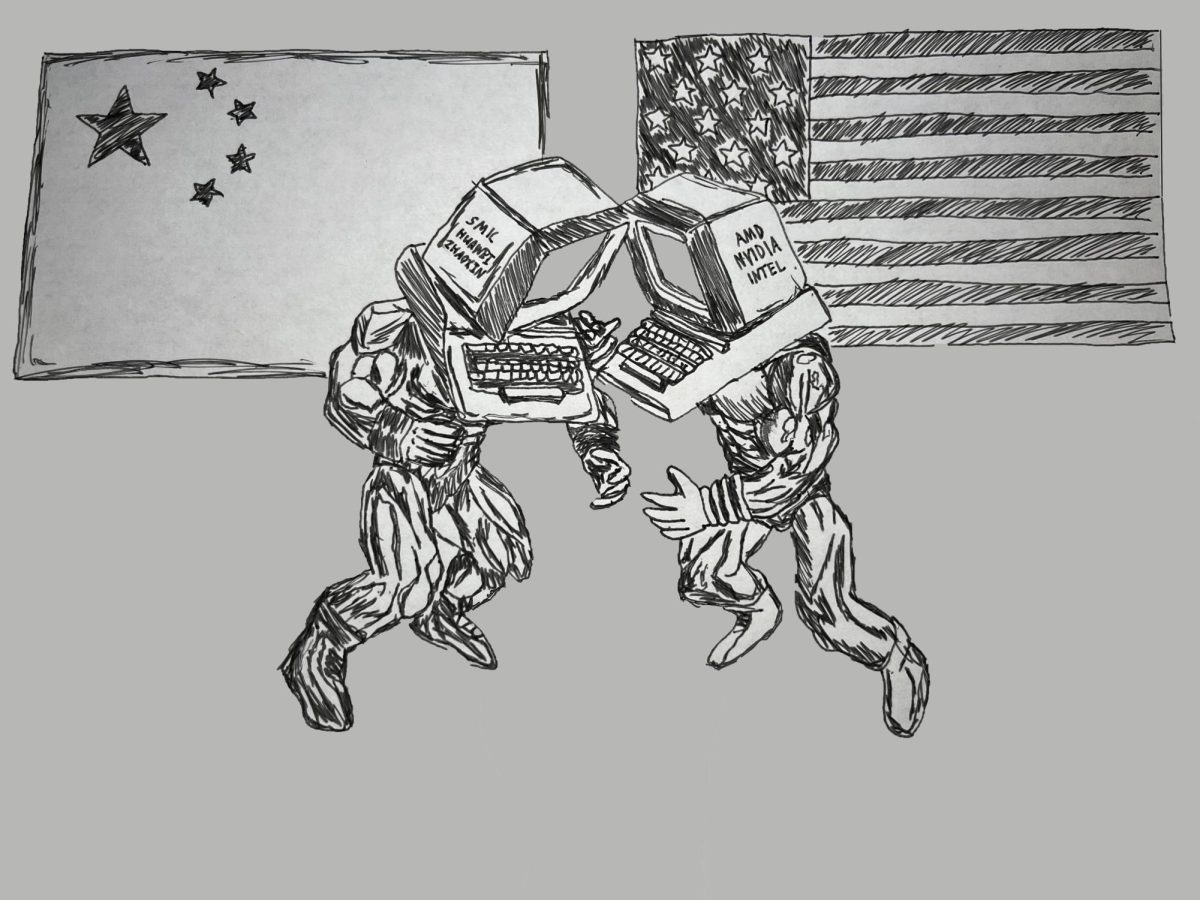On March 18, at the Woodstock Developers Conference in San Jose, NVIDIA CEO Jensen Huang gave a two-hour keynote speech where he heralded a new era for semiconductors. Huang highlighted their role in shaping the future of technology, underscoring the advancements for chips and their demand in the AI and data processing surge. The silicon revolution started sixty years ago in the United States, where they produced 40 percent of the world’s semiconductors. As a result of increased regulation, lack of job opportunities, and decreased financial incentives, no leading semiconductor chips are manufactured on American soil today. Instead, the development of these chips are manufactured in various parts of Asia such as Taiwan and South Korea. The United States must prioritize revitalizing its semiconductor industry through strategic investment and workforce development to mitigate national security risks and regain global leadership in chip manufacturing.
A few days after the conference, President Joe Biden announced his administration’s award to the chip-manufacturing company Intel. The Biden-Harris administration agreed on a flexible initial agreement that outlines terms to provide up to $8.5 billion in hopes of regaining the semiconductor lead. The grant was aided by the 2022 CHIPS and Science Act, which contains subsidies and incentives worth more than $50 billion to galvanize domestic production of semiconductors. In hopes of manufacturing critical technologies in America and re-establishing the supply chain, states such as Arizona and Ohio have already commenced the manufacturing of chips, and the Biden-Harris administration plans to produce a fifth of the leading semiconductors by 2030.
Of the $8.5 billion, $50 million was allocated for workforce training. One of the biggest obstacles to the United States’ goal in pursuing chip manufacturing is the talent gap relative to competitors. Most of the semiconductor talent comes from overseas due to the concentrated supply chain in Asia. Additionally, domestically-trained talents have a proclivity to focus on software development instead of the semiconductor industry. The industry will require more than one million additional skilled workers by 2030, equating to more than 100,000 annually. The CHIPS and Science Act needs to prioritize bridging the gap in education as it is the backbone for successful pursuit in the semiconductor industry. An example is the QuickStart program, which has begun to collaborate with many institutions, providing free-of-charge education for all.
The erosion of U.S. capabilities in the semiconductor industry directly threatens safety; lack of activity in the industry increases the chances of intellectual property theft and the disruption of the supply chain. Even the smallest military equipment consists of thousands of semiconductor chips that are not manufactured in America. In recent years, the United States has had tension with China over the semiconductor business. One key issue revolves around intellectual property rights and technology transfer. The United States has accused China of unfair trade practices, which directly affected the market. Increased regulations were imposed and a drive for self-resilience became paramount. The U.S. has facilitated a dependency on a concentrated supply chain that goes insofar as the slightest geopolitical disruption immobilizes the government for days.
The United States needs to stay committed to its course of action and regain the lead in the semiconductor business. To regain the lead, the government must provide more job opportunities and foster a conducive environment. With the new advancements in microprocessor technology, the Biden-Harris administration should seize the opportunity and take effective approaches, mitigating threats to national safety and setting the United States apart as one of the world’s leading chip producers.













